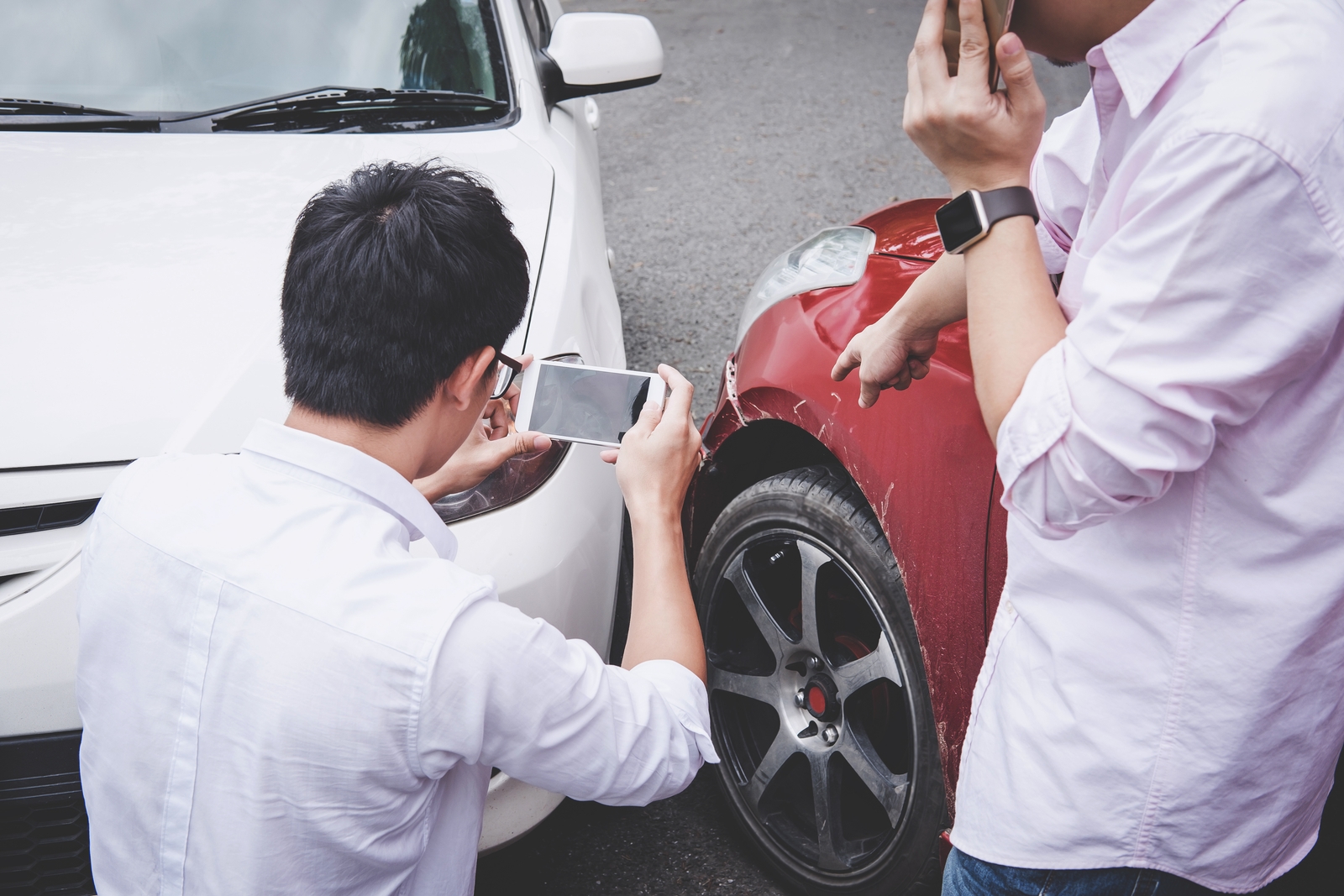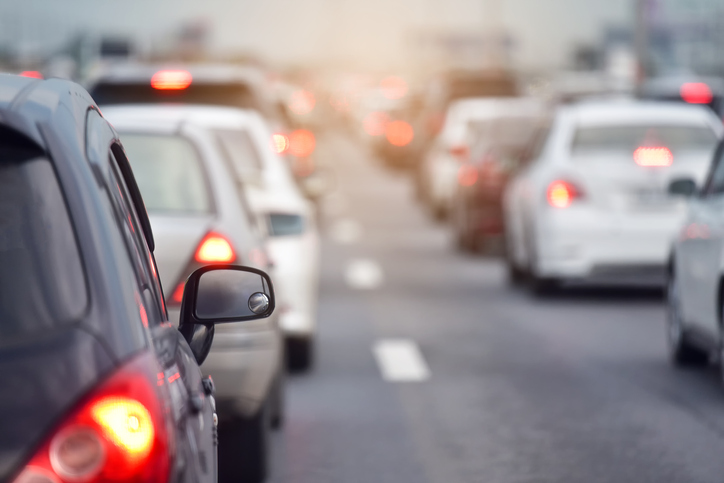Nobody wants to think about getting into a car accident, but it can happen even if you’re a great driver. According to the National Highway Traffic Safety Administration, there were over 6 million police-reported car accidents each year from 2014-2018 in the United States.
If you’ve ever been in one, then you know firsthand how overwhelming and disorienting it can be. Amid the initial shock and rush of adrenaline, your mind races with concern over potential injuries, the safety of your passengers and the other driver, as well as the extent of the damage.
Above all, you’re likely asking yourself: What do I do now?
While you can’t control other people’s behavior behind the wheel, you can make a game plan so that you’re prepared in the event of an accident.
What To Do Right After a Car Accident
Getting into a car accident can feel like a whirlwind, and if it’s your first time filing an insurance claim, you might be unsure of where to start. There are some important steps you should take immediately after a collision that will make your life easier when it’s time to get the auto insurance companies involved. Let’s walk through exactly what to do, beginning from the moment of impact.
1. Check for injuries
Feeling panicked and confused right after the accident is normal. Before you start worrying about potential damage and insurance, take a minute to make sure you’re OK. The moment can be so intense that you don’t realize until later that you’re injured.
Also, check to see if any passengers in your car have been hurt. If any of the injuries are serious, immediately call 911.
2. Get to a safe spot with your passengers
Even if you’ve made it through the collision without injury, you might not be out of danger just yet. Traffic will likely still be moving around you, so your priority needs to be getting everyone in your car to safety.
If you can pull over to the side of the road, then you should do so. But if the damage to your vehicle is so extensive that it can’t be moved, then you’ll need to find a protected spot far away enough from passing cars that you’re not in harm’s way.
3. Inspect your car and document the damage
Once it’s safe to do so, take a close look at any damage to your vehicle that was caused by the accident. Sometimes damage will be obvious right away, while other times it can be more subtle, like when the damage affects the car’s engine or electrical system. If possible, take close-up photos of anything you see that could help the insurance companies understand what happened.
“Photographs of property damage are frequently used in court to evidence the amount of force involved in the collision or to support one driver’s version of how the crash occurred,” says John Willis, a personal injury attorney in Boca Raton, Florida. “Frequently, one vehicle has minimal visible damage, but the others have substantial property damage. Photographs can be invaluable in showing the impact was violent, even if your vehicle was not seriously damaged.”
4. Exchange information with the other driver(s)
Get contact information, insurance details, and identification from every driver who was involved in the collision. If possible, use your smartphone to take photos of driver’s licenses, car registrations, and insurance ID cards. Be sure to also record the make and model of each car and write down where the accident happened, the weather, and the time of day.
5. Gather contact information from any witnesses
Passersby may stop to check if anyone is hurt. If they witnessed the accident, don’t let them drive away without getting their contact information. Witness accounts are helpful in case other parties dispute the details of the accident.
6. File an accident report
If the police weren’t involved at the scene of the accident, you should file an official report with the closest police department ASAP. This can be done online. If the police were involved, ask for the name and badge number of each officer and where you can find a copy of their report.
You’ll need this official report to file an auto insurance claim. It can also come in handy if a driver sues you for medical injuries or damages, according to the Insurance Information Institute.
How To File a Car Insurance Claim
Once you get past the immediate aftermath of the accident, it’s time to deal with insurance. Here are the steps to submitting a claim and handling any necessary repairs.
1. Reach out to your insurance company ASAP
While the details are still fresh in your mind, let your insurer know that you just got into an accident. You should do this no matter who was at fault, according to the Insurance Information Institute. You’ll speak with a representative who can help you figure out if your policy will cover the damage and whether you have rental reimbursement coverage — aka transportation expense coverage — to pay for a rental car while yours is being repaired.
2. Review your deductible
Your deductible is the amount of money you need to pay out of pocket before your insurance company covers anything. With collision coverage, your deductible is subtracted from the amount of the covered claim, and your insurer pays the rest (up to your policy’s coverage limits).
Keep in mind that filing an insurance claim could result in an increase in your premium for three years, according to the Insurance Information Institute. So, if the damage is minor enough that the cost of repairs is less than your deductible, then it may not be worth filing a claim.
3. Take note of deadlines
Find out from your car insurance company if there are any important deadlines when it comes to filing a claim, providing information, and submitting medical or repair bills. Just in case, you should also make note of any time limits for disputing the claim with your insurer.
If you decide to take legal action over the accident, be mindful that you’ll need to do so within a certain amount of time. Check your state’s statute of limitations — for example, in California, it’s up to two years for personal injury and three years for property damage.
4. Provide required documents and information
The claims process varies by insurance company, but you’ll typically be asked to fill out a “proof of claim” form and produce a copy of the accident report, according to the Insurance Information Institute. You’ll also have the opportunity to submit evidence — like all those photos you took at the scene of the accident — and the information of the other drivers involved.
Tracking the status of your auto insurance claim
Auto insurance companies typically have a website or mobile app that can facilitate the claim process. You should be able to upload photos, monitor the progress of your claim, request reimbursement if your car had to be towed, and more.
5. Receive a repair estimate from the claims adjuster
Your insurance company will usually send a claims adjuster (this person also determines who was at fault for the collision) to inspect your car and make an initial estimate of the repair costs. According to the Insurance Information Institute, you don’t need to immediately accept the adjuster’s estimate, so you can get a second opinion and negotiate if you believe you’re being lowballed.
6. Get an estimate from a repair shop
Your insurance company will likely require you to provide at least one cost estimate from whoever is doing the repair work. If your insurer thinks the estimate is too high, you might be asked to get one from a different car dealer, garage, or mechanic. However, your insurance company can’t force you to use a specific shop, according to the Insurance Information Institute.
Beware of betterment
If you have an older car that gets fixed with newer parts, your insurance company could make the case that the repairs have actually increased the value of your car, which is a situation called “betterment.” As a result, your insurer would have a valid reason to reduce the total amount of your claim.
7. Have your car repaired — on the insurer’s dime
Once you and your insurer agree on the estimated repair costs, you can get the damage fixed at the approved shop of your choice. Your policy determines whether you’ll cover the bill upfront and get reimbursed or if your insurer will pay the repair shop directly. Once the financial details are settled and your car is fixed, the claim process will close.
If your car was totaled
If the vehicle is damaged beyond repair and you have collision coverage, then the insurance company will pay you the cash value of the car. Note that your deductible will be subtracted from this amount.
3 Tips for Handling a Car Accident
Getting into a car accident can be a stressful and overwhelming experience. Here are some key tips to keep in mind — and mistakes to avoid — immediately after the crash.
Don’t leave the scene of the accident
State laws require that you remain at the scene of the accident to exchange information with anyone whose vehicle was damaged. Otherwise, you could be charged with a hit-and-run. If the other car is parked and the driver isn’t present, then you must leave a note with your name and contact information.
Call the police if it’s serious
If the accident is severe and someone has been hurt, you should call the police or highway patrol. They can help manage the scene and file an accident report. Again, ask how you can get a copy of the police report and write down the names and badge numbers of the officers.
“Though some states do not mandate that the police be notified when there are no injuries and there is little or no property damage, you should almost always call the police and get a report for insurance purposes and to record the identity of the persons and vehicles involved,” Willis says. “This is particularly true if you suspect that the other driver may be under the influence of alcohol or drugs or you feel unsafe at the scene.”
Don’t admit fault at the scene
Your instinct might be to apologize right away, but that could come back to bite you when it’s time to determine which driver was at fault.
“Even if you think you may have caused the accident, in some cases, there are other reasons contributing to the accident,” Willis says.
For example, drunk drivers, defective roadways, obstructed vision, and even overgrown landscaping could be the ultimate reason behind the crash, according to Willis.
“Let your lawyer, insurance company and their investigators make the final determination as to the causes of the collision,” he says.
How To Prepare For a Car Accident
If you got into a car accident today, would you be ready? Although you can’t control when a collision might happen, there are a few things you can do in advance that will better prepare you for an accident.
Maintain sufficient coverage
Most states require you to purchase a minimum amount of liability insurance to cover the other driver’s medical bills and car repairs if you’re at fault for an accident. However, if you only buy the bare minimum, then you may find yourself in a situation where the bills exceed your coverage limits.
At the very least, familiarize yourself with your policy’s liability limits, which reflect what the insurer is willing to pay for property damage and bodily injury in the event of an accident. This way, you won’t be unpleasantly surprised when you try to file a claim.
Store key documents in your glove compartment
Not knowing where your registration or insurance information is located will only add to your stress levels after an accident. Save yourself the added hassle of rummaging through your belongings for important documents by storing them safely in your glove compartment.
Keep emergency supplies in your car
Consider storing a small first-aid kit, flashlight, and portable charger or power bank in your car in case you’re low on phone battery after the accident and need to make calls and take photos. It also doesn’t hurt to leave some pens and paper in your car, especially if your phone is damaged in the collision and you need to exchange information with the other driver.
Remember, accidents can occur in inconvenient or even dangerous locations. It’s smart to keep orange cones or even flares in your car so that the flow of traffic can better avoid the crash site.
The Bottom Line on Filing a Car Insurance Claim
When you buy car insurance, you’re paying to reduce potential financial stress. Getting familiar with your policy details and the insurance claim process in advance can also help reduce emotional stress, because you’ll feel confident that you know what to do after a collision. Remember, being prepared for an accident starts before the accident itself.



